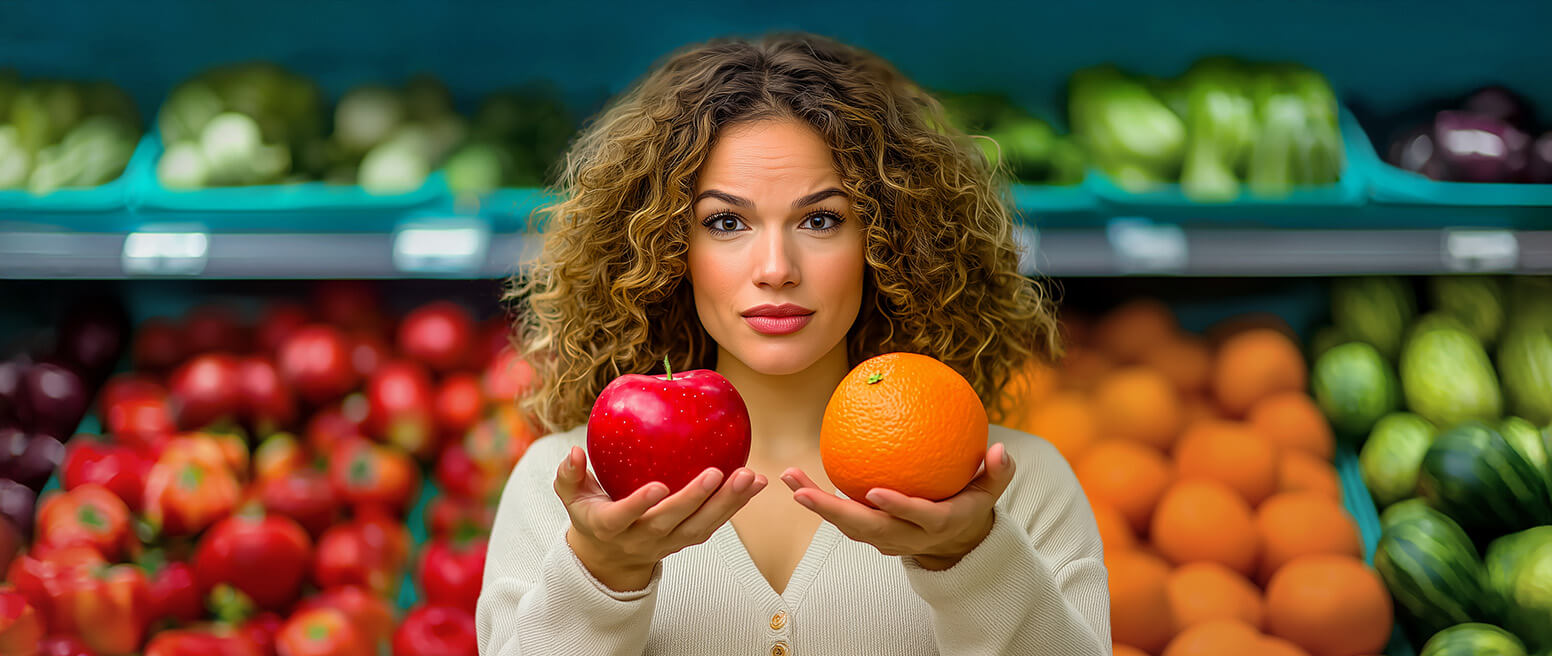How to Tell a Chargeback vs. Refund — What’s the Difference & How Do You Prevent Both?
At first glance, chargebacks and refunds might seem like two sides of the same coin. Both refunds and chargebacks are typically triggered by the cardholder. And, in both cases, the merchant sees a reversal of funds. That means your bottom line takes a hit, whether it's a direct refund or a chargeback.
Dig a little deeper, though, and you'll find that the implications for businesses differ significantly. For instance, chargebacks tend to have steeper repercussions. Over time, frequent chargebacks can even jeopardize one’s ability to process credit card transactions. So, while neither scenario is particularly cheerful, chargebacks pack a harder punch in the long run for a business.
Do you fully grasp the nuances between them? More importantly, are your customers aware of these differences?
Recommended reading
- How Do Banks Investigate Disputes on Credit Cards?
- What Happens When You Dispute a Transaction?
- The Bank Dispute Process: A Step-by-Step Guide
- What is a Transaction Dispute? Why Do Customers File Them?
- Authorization Reversals: Lost Sales are NOT Always Bad?
- Dispute Management System: How to Pick the Best Provider
Chargeback vs. Refund: Defining Each Process
Both refunds and chargebacks are processes aimed at giving the customer their money back. As we implied above, though, the two processes have different routes and effects. So, let’s start by very quickly outlining each of these processes.

Refunds are just part of doing business; even if a merchant provides stellar services, some occasional refund requests are inevitable. With a chargeback, though, the merchant loses sales revenue and any merchandise shipped, then gets hit with an added chargeback fee. They may even take a hit to their standing with credit card companies.
| Chargebacks | Refunds | |
| Parties Involved | Cardholder, issuing bank, merchant, acquiring bank, and card network (if the dispute proceeds to arbitration) | Cardholder and merchant only |
| Cost to Merchant | $20 to $100 per filed dispute | None |
| Timeline for Resolution | 30 to 180+ days | 3 to 10 business days |
| Stages Involved | 1. Initial cardholder dispute 2. Cardholder receives provisional credit 3. Merchant analyzes reason code 4. Merchant engages in representment 5. Pre-Arbitration 6. Arbitration | 1. Cardholder contacts merchant for a refund 2. Merchant issues a refund |
| Complexity | High | Low |
| Governed By | Legislation: Fair Credit Billing Act of 1974 Electronic Funds Transfer Act of 1978 Credit CARD Act of 2009 Card network rules: Visa’s Dispute Management Guidelines for Visa Merchants Mastercard’s Chargeback Guide Merchant Edition | Merchant’s refund and exchange policy |
Why a Customer May Choose a Chargeback Over a Refund
Diving deeper into the chargeback vs. refund conundrum, there are a few reasons why a customer might lean towards a chargeback.
Let’s say a buyer has had slow (or no) response from a merchant in the past following a refund request. The buyer might feel that going straight to their card issuer will get results quicker.
What merchants can do: Make customer service a priority and treat your refund and return policy as a tactical component of your overall chargeback prevention strategy. Remember that every refund you issue is a potential chargeback that you avoid.
Then there's trust; if a customer feels a business isn't playing fair, they might see a chargeback as a safer bet. After all, the card issuer is a big bank, and there's a certain confidence that comes with that.
What merchants can do: Don’t give customers reasons to doubt your reputation. Pack orders correctly, deliver working products on-time, proactively communicate anticipated delays, and put a lid on billing errors before they get out of hand.
Some cardholders might just not know the difference between refunds and chargebacks. In fact, data from the 2024 Chargeback Field Report reveals that as many as 75% of surveyed customers think chargebacks are equivalent to refunds. They don’t realize the hassle and costs it can trigger for merchants.
What merchants can do: Educate customers about the difference between chargebacks and refunds. Better yet, incentivize refunds by making them fast, seamless, and hassle-free. Cardholders who perceive a refund to be the superior alternative will naturally opt for them over a dispute.
50% of surveyed cardholders say they opt for chargebacks because they believe it to be faster and more convenient than requesting a refund. The reality, however, is that a chargeback can take anywhere between 30 and 180+ days to resolve. By comparison, a merchant can process a refund in as little as several business days.
What merchants can do: Develop a reputation for providing fast and flexible refund and exchange options. To placate cardholders who want their money back immediately, offer alternatives like store credit or an item exchange.
A cardholder who is a victim of third-party fraud or unauthorized activity may instinctively file a chargeback. If you did, in fact, process an unauthorized transaction, then the cardholder is within their rights to file a chargeback, as they know they’re protected under their issuer and card networks’ $0 liability policies.
What merchants can do: Deploy third-party fraud prevention tools at checkout, like 3-D Secure, Address Verification Services (AVS), device fingerprinting technologies, Card Verification Values (CVVs) for card-not-present transactions, and velocity checks.
First-party fraud, also called friendly fraud, happens when a customer contacts their card issuer to dispute the charge without having a valid reason to do so. They might insist they never got that book or that the gadget wasn't quite up to snuff, even if it was delivered as described.
What merchants can do: Leverage tools like Verifi Order Insight and Ethoca Consumer Clarity to resolve cardholder misunderstandings before they flare up into chargeback. In addition, clarify your billing descriptors so that they minimize confusion and help customers remember their purchases.
That last point, in particular, creates a double dilemma for merchants. Not only do they part with the product, but the payment they were expecting gets reversed. If this becomes a recurring issue, there's the looming risk of higher processing fees, and even a potential freeze on their payment accounts.
But the story doesn't end with just financial hiccups. Friendly fraud can also seriously impact a merchant's reputation. Sorting out these situations means investing time and resources, making it crucial for merchants to stay alert and ensure transparent communication with their customers.
What is a Double Refund?
Getting hit with a chargeback should be bad enough. However, that loss can be compounded by turning into a so-called “double refund.”
Where a double refund comes into play is if, during the time the customer is disputing the charge with the card issuer, they also approach the merchant directly for a refund. The merchant, aiming to offer good customer service, might process the refund, unaware that the card issuer is simultaneously initiating a chargeback due to the customer's dispute.
It could be that the consumer contacts the merchant for a refund, but the funds don’t show in the customer’s account when expected. So, the customer files a chargeback, assuming the merchant ignored or denied the refund request. Or, maybe the customer contacts the bank and initiates a dispute, then contacts the merchant and requests a refund.
In either case, the result is that the merchant effectively refunds the amount twice. Once when they process the direct refund, and again when the chargeback from the card issuer comes through. This overlap can pose significant financial challenges for merchants. The threat that double refunds pose emphasizes the need for effective communication and robust transaction tracking.
Learn more about double refunds10 Tips to Prevent Refunds & Chargebacks
Merchants should quickly process refunds and clearly communicate to customers the expected timeframe for the refund to reflect in their accounts. This is crucial to mitigate the risk of double refunds, and friendly fraud chargebacks.
That said, a merchant’s best bet is generally to take proactive steps that work to prevent payment reversals — in all their forms — before they happen. Don’t think of it as chargeback vs. refund prevention; it’s chargeback and refund prevention.
Here are some ideas that sellers should consider:
#1 | Quality Control
Source products from reliable suppliers. Authenticate all designer or luxury goods, in particular, before making them available for sale. These are hot targets for knock-off goods that suppliers might pass off as legitimate.
#2 | Accurate Product Descriptions
Give customers as much detail about the products as possible without exaggerating features or benefits. Details like size, color, dimensions, etc. — really spell out the details here.
#3 | High-Quality Images
Small, pixelated product images won’t cut it. Merchants should give customers multiple clear, high-definition pictures (and video, if possible) to show the item from different angles.
#4 | In-Depth FAQs
Don’t wait for customers to ask questions. Create a detailed section for “frequently asked questions”; provide specific answers on products and policies that are likely to come up repeatedly.
#5 | Rapid Response
One-third of customers expect a response to email or social media inquiries within one hour. To meet that high standard, merchants should consider offering round-the-clock live service across all channels.
#6 | Proper Handling
Package all items carefully, and review orders before they go out to ensure they are delivered to the correct destination. Slight errors in logistics can mean lost or damaged goods.
#7 | Easy Cancellations
If you do business on a recurring billing or a subscription model, make it as easy as possible for customers to cancel service. Cancellations aren’t ideal, but they’re better than chargebacks.
#8 | Up-Front Information
Payment, shipping, and returns policies should be clearly stated in simple language and easily located on the merchant’s website. Making buyers go hunt for policies makes calling the bank a more enticing option.
#9 | Exception Indicators
If the standard rules don’t apply (such as with “final sale” items), ask buyers to confirm they know these exceptions before purchasing. They shouldn’t be caught off-guard when trying to return goods.
#10 | Chargeback Alerts
Deploying chargeback alerts can drastically reduce exposure to risk by alerting the merchant about a pending chargeback before it’s filed.
There are other examples and best practices to consider, too. In fact, we’ve put together a guide with dozens more best practices to prevent chargebacks and refund requests. Click below to download your free copy:
GET THE GUIDEHere’s the bottom line: merchants should make everything — especially return rules— obvious and easy from the customer’s perspective.
As a bonus tip: when merchants get return requests, they should think of ways to turn them into opportunities. Offering a 10-20% bonus on merchandise returns if customers will take store credit instead of cash, for example. This lets the merchant recover the sale and build positive customer relationships, all with no extra effort.
Consider Expert Help
When it comes to the question of chargebacks vs. refunds, there’s really no question about which is more harmful. Issuing a refund will almost always be faster, easier, and less costly than dealing with a chargeback. If chargebacks are still a problem, though, you may want to consider professional help.
Chargebacks911® offers end-to-end solutions for dealing with post-transactional fraud. We can help you create a chargeback management strategy that’s customized to your business to let you offload chargeback management and focus your attention on growing your business. Contact us today to get started.
FAQs
What are the cons of chargeback?
Chargebacks can hurt merchants through lost revenue, added fees, and potential damage to their payment processing reputation. For consumers, chargebacks may lead to blocked accounts or flagged purchasing behavior, and can sometimes complicate relationships with merchants. Both parties can also face extended resolution times and increased transaction complexities.
Do customers usually win chargebacks?
Customers often have the upper hand in chargeback disputes due to credit card companies' inclination to protect cardholders. However, if merchants provide compelling evidence that a transaction was legitimate, they can successfully contest the chargeback. Effective communication and thorough documentation are key for merchants to win these disputes.
Who loses money in a chargeback?
In a chargeback, the merchant loses the funds from the disputed transaction. Additionally, they often incur chargeback fees imposed by their payment processor.
What evidence do I need for a chargeback?
To win a chargeback, a merchant typically needs to provide transaction records, proof of product delivery or service fulfillment, and any communication between the merchant and the customer. This evidence should clearly demonstrate that the transaction was valid, authorized, and met all the agreed-upon terms. Prompt and thorough documentation is crucial in making a strong case.
Can a chargeback get you in trouble?
Yes, a chargeback can get a customer into trouble. If a customer frequently initiates unjustified chargebacks, they might be flagged by their card issuer, leading to account limitations or closures. Additionally, merchants might blacklist customers deemed problematic, preventing future purchases.
Is a refund the same as a chargeback?
No. A refund occurs when a customer asks the merchant to reverse a transaction. If the merchant approves the refund, money is returned to the customer’s account, and the merchandise is returned to the seller. In a chargeback, the customer bypasses the merchant entirely. Instead, the cardholder files a dispute with their issuing bank, who then handles the chargeback. If the merchant loses the chargeback, the transaction is forcibly reversed, but the cardholder keeps the merchandise.
What qualifies as a chargeback?
Chargebacks qualify as valid if the cardholder experiences third-party fraud or unauthorized activity, receives damaged, defective, different, or severely delayed goods, or encounters an unresolved merchant billing error. If a chargeback is filed for any other reason, it is invalid.
Who loses money in a chargeback?
The merchant loses money in a chargeback in the form of lost revenue, lost merchandise, and fees assessed by their acquiring bank.
















